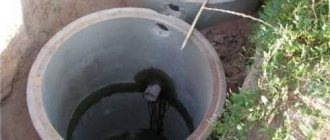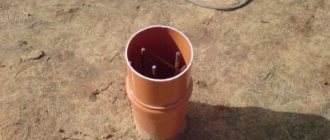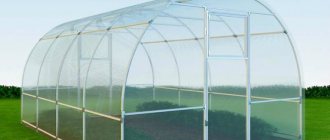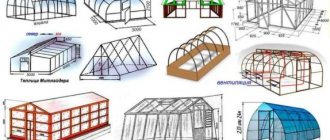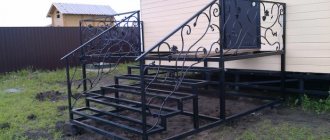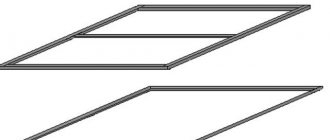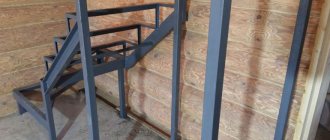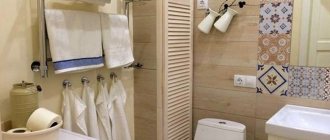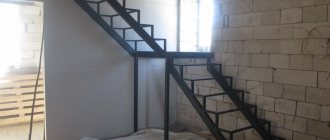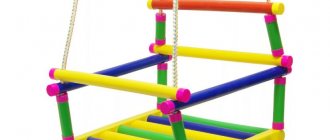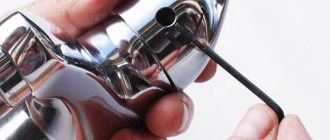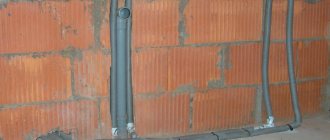Frame houses have become popular recently, and the materials used to make them are varied.
The main criteria underlying the selection of building materials are sufficient strength, durability, safety for human life, water resistance, heat protection, and high fire resistance. The standard option is wooden frame houses. About 85% of residents of European countries and the USA live in frame-type houses with metal profiles . In the regions of Russia, steel frames were previously used in the construction of industrial buildings, warehouse hangars and workshops. Today it is most often used in the construction of residential buildings.
[contents]
Use of metal frames
Not only private houses on a metal frame are built using light steel thin-walled structures. The construction of buildings with wide spans without additional supports makes it possible to use this technology in the construction of garages, hangars, production workshops, warehouse complexes, shopping pavilions, sports facilities, agricultural buildings for keeping poultry, small and large livestock. Economical prefabricated buildings are characterized by high strength, low weight and mobility.
Recently, practical and convenient stairs on a metal frame have been installed in residential buildings and administrative buildings. Covered with plasterboard, wood or metal-plastic, they have no restrictions when choosing a shape and configuration.
Having experience in construction work, pouring the foundation and assembling a house from a metal frame with your own hands will not be difficult. And the external decoration and decoration of the rooms of a self-built home will bring great pleasure.
The welded frame of a metal building is a durable and strong internal skeleton of the structure. The advantages of such metal frame structures are lightness, strength, relative simplicity, high production and installation rates, mobility and independence from the access road to the installation site, and ease of integration into any space. The metal frame of the building is perfectly compatible with the simplest block and pile foundations, and is also easy to complete, configure and rebuild. The material of the metal frame of the building is profile pipe; angle and channel are less commonly used.
The metal frame of the building includes a lower frame, an upper frame and racks between them. In a metal frame it is very easy to provide doors, openings, windows and metal sheathing for the roof and floor. A frame building made of metal can be sheathed with corrugated sheets, wood, or sandwich panels. The metal frame is very easy and convenient to sheathe and insulate.
Metal frame for a building
Advantages of metal frame buildings:
- Buildings erected using metal frame technology are characterized by low cost (if compared with buildings constructed using traditional technology). The cost of the structure mainly depends on the materials used. The cheapest ones today are houses with wooden frames. The cost of houses with a frame made of profile pipes is much higher, and their price is directly proportional to the cross-section of the pipe. After all, for example, bending a profile pipe is a rather labor-intensive operation and is not cheap.
- High speed of construction of metal frame buildings. Using a profile for the frame as the main material can reduce the construction time of a building several times.
- The absence of so-called “wet” processes in the technology of constructing residential buildings using a frame (except for laying the foundation). This allows installation of frame buildings at any time of the year and regardless of weather conditions.
- Making metal structures with your own hands ensures the absence of any shrinkage - not only during construction, but also during operation of the structure.
Advantages and disadvantages
This technology is becoming increasingly popular in European countries (including northern ones), Canada and America. And all because steel does not rot, insects do not eat it. A metal frame structure weighs several times less than a house made of wood (two times), and even more so, it is lighter than houses made of brick and other similar materials. The light weight of the building means lower costs for the foundation, since its parameters depend on the load, which further reduces the cost per square meter of construction. Typically, pile, pile-grillage or strip foundations are installed under such houses. On average, one square of area costs 4-5 thousand rubles (excluding the cost of finishing materials).
The technology used to build a metal frame house is called lightweight thin-walled steel structures, or LSTK for short. Light does not mean fragile. Houses built using LSTK technology can withstand earthquakes of magnitude nine. But this applies to buildings no higher than 3 floors.
Another advantage of a steel frame over a wooden frame is that it is strong enough to withstand heavy roofing materials. If you decide to use ceramic tiles, please do so. Only its weight needs to be included when calculating the foundation parameters.
The design of the wall pie itself is almost the same as that of wooden ones. The whole difference is in the material used for the frame and the method of assembly.
Sectional view of a house wall made of metal profiles
What to do with cold bridges? Manufacturers claim that the problem has been solved. Modern thermal profiles, from which private houses are built, have cuts arranged in a checkerboard pattern. They prevent through freezing of structural elements.
This is what a picture of the thermal profile “working” looks like:
And although thermal profiles really work, such a house is still colder than a wooden frame house. However, the problem can be solved by making high-quality insulation. If the insulation “pie” is properly executed with all the membranes (windproof, vapor-permeable on the outside, vapor barrier on the inside), the metal-frame house will be warm and will spend no more on heating than in the so-called “warm houses.”
For insulation, you can use any modern insulation - mineral wool, polystyrene foam, extruded polystyrene foam, foam glass, ecowool. Foam glass has the best characteristics, extruded polystyrene foam has a little worse. But they have a respectable price, although the required thickness is several times less than mineral wool. As a result, the costs for insulation are comparable.
Mineral wool has the most optimal combination of qualities and price. It is more convenient to work with basalt. It also has good characteristics. Fiberglass also has good characteristics, but it is difficult to work with. Slag wool is the cheapest, but it is very susceptible to getting wet; when using it, a ventilated façade must be installed.
Option for complete assembly of a house on a steel frame (LSTC technology)
For the reasons given above, I most often choose basalt wool from the whole variety. It fits well into the frame, has good thermal insulation properties, is relatively inexpensive, and is also a good soundproofing material, which is important for this technology.
What is a metal frame house made of?
The main element of LSTK is a thin-walled galvanized profile
, solid or perforated.
When properly calculated, a frame made of thin metal profiles becomes a reliable supporting structure. The galvanized profile does not oxidize, does not deform, or rot
.
The floor of any floor can withstand a load of up to 1000 kg. This indicator is comparable to the load-bearing capacity of a reinforced concrete slab. Layers of insulation dampen sound waves and vibration.
Some profiles are perforated to reduce heat transfer and avoid “cold bridges”
, do not allow the heat to escape. The thickness of the profile offered by the market ranges from 0.75-3 mm.
The frame made of profiles is insulated, the outside is laid with two layers of gypsum fiber, after which the outer cladding is attached.
The outside of metal frame buildings is finished with:
- siding, metal or vinyl;
- OSB, DSP boards, followed by finishing with plaster;
- metal profiled sheet;
- brickwork.
A vapor barrier film is laid on the side of the room and covered with interior finishing material. An air gap is left
between the film and the fence .
As a rule, gypsum plasterboard sheets are used for the inner surface of the wall, finishing with plasterboard sheets as desired.
For insulation, only non-flammable materials are used - mineral wool, extruded polystyrene foam
.
Wall and frame elements are assembled on mechanized assembly tables and delivered to the construction site in large-sized parts or individual posts, adjusted to the millimeter.
The thickness of the walls depends on the climatic region, varies between 150-300 mm
, the number of storeys is limited to six.
Set of tools
The list of necessary devices remains standard regardless of the complexity of the plasterboard structure. It includes:
- A hammer drill with a drill of the required diameter. An impact drill does not always cope with reinforced concrete floor slabs.
- Screwdriver. In addition to it, you can use a cutter, but this device is rarely present in the arsenal of the average homeowner.
- Marking tools: level, plumb line, tape measure, pencil.
- Metal scissors. When cutting profiles, they are used rather than a grinder. When using the latter, the galvanized coating of products suffers.
USEFUL INFORMATION: Is it possible to plaster drywall: how to do it correctly and what to do it with?
Frame assembly
Parts manufactured at the factory with extreme precision are marked in accordance with the “skeleton” assembly diagram. The construction of a house from a metal frame is facilitated by the fact that each element and hole strictly corresponds to the approved project. To assemble a durable building frame, you don’t need any special skills or complex tools: you don’t need to measure, cut, or adjust anything.
Low-rise private metal-frame houses are usually assembled by a team of 3-5 people. Transverse frames are assembled using bolted connections from vertical posts and horizontal crossbars, which are installed on the foundation. The design strength of the structure is given by ties and braces attached to the frames. Then the wall and roof purlins, frames for doors and windows are installed. The assembled supporting frame is filled with insulation and lined.
The cost of 1 m2 in a multi-storey metal frame building is reduced by approximately 20-30%, and the speed of construction of a residential building is 3 times faster. The construction of houses made of metal frames with high heat-saving indicators makes it possible to use economical LGST technology in the cold regions of the Far North.
Pile-screw foundation for a workshop
So, VMG began construction of the workshop in the winter. The task is to quickly put up the “box”. How to do this if:
- It's frosty outside
- Time is short
- Concreting is no longer necessary
The solution is to put the workshop on “all-weather” screw piles.
VMG
I bought four piles. They turned it themselves. I used a jackhammer to remove the frozen soil to a depth of 0.3 - 0.4 m. Next came ordinary soil. The piles were screwed in without any problems. It turned out that one side of the workshop stands on stilts, and the other side rests on a concrete platform - the base of the canopy in front of the house.
Construction of a metal frame for the construction of a garage
When creating metal structures using your own hands, you need to take into account that this structure must be very rigid, durable and stable. The material for the frame can be a large section corner. It is better to fasten the frame elements by welding, but you can also use a nut-and-bolt connection by drilling holes for fasteners with a hammer drill.
The assembly of the metal frame must be carried out on the construction site. First, the lower frame is mounted, which is attached at the corners to the pins protruding from the foundation - this ensures its immobility. Then corner posts are installed, connected at the top by ceiling purlins.
Vertical posts are installed along the back and side walls of the metal structure made by hand, which will ensure the rigidity of the structure and will serve as lathing for installing wall cladding. There should be a distance between the racks equal to the width of the sheathing sheet, or be slightly less by 3-5 cm if installation with overlap is provided.
The cost of building a turnkey house from light steel thin-walled structures includes a budget for the frame, a set of finishing and other materials, as well as a fee for installation work. This technology is characterized by short implementation times, as well as a favorable price for finished projects.
Door (window) opening
If the partition has a door, then a gap of the appropriate length is made in the lower guide. Then they proceed according to the following scheme:
- The racks adjacent to the doorway are aligned vertically using a level. They are attached with self-tapping screws to the frame guides and then reinforced with wooden beams.
Note! The distance between the posts forming the doorway should be 2 cm greater than the width of the frame.
- The upper jumper from the guide profile is installed. It should be located 1–1.5 cm above the future door structure.
- An additional vertical post, cut to size, is attached to the gypsum board joining line above the door.
The window opening in the partition is made in a similar way, only another horizontal lintel is added at the bottom.
USEFUL INFORMATION: Plasterboard ceiling in the bedroom: design, 7 photos
Metal frame houses
Metal frame construction has been used in construction before. This construction method was used in the construction of industrial buildings: workshops, farms, greenhouses, warehouses and hangars.
After modernization of technology, frames made of profile pipes are used for the construction of public and commercial buildings (cafes, shops, gas stations), cottages and low-rise residential buildings. Technologies are used in the reconstruction and repair of buildings - the construction of wings and attics, the addition of floors.
Advantages of frame construction
The whole world uses metal frame technology in construction. In the USA, Western Europe and Japan, 70% of residential buildings were built using this method. The technology has enough advantages to make it your choice when planning to build your own home.
Minimum labor costs are the main advantage of metal frame construction
- The first advantage of building a frame house from a profile pipe with your own hands is its low cost. Traditional technologies are more expensive. The price of the structure will directly depend on the materials you are going to use. The cost of the frame depends on the cross-section of the pipes, and the cross-section is selected depending on the scale of the construction. For example, if you need to assemble a staircase frame from a profile pipe (section 60x40 mm), the material will be cheaper than for the frame of a house, where the cross-section is much larger. Also, one-story houses are built from smaller diameter pipes than two-story houses.
- The next plus is speed. The use of profile pipes as a frame will reduce the construction time of the building several times.
- Frame technology does not provide for “wet” processes, so weather conditions do not affect construction. The exception is laying the foundation. But often the base is assembled without a foundation. For example, if you are building the frame of a greenhouse or temporary shed from a profile pipe.
- There is no shrinkage in buildings constructed using frame technology. During construction and operation, the building does not change its shape and does not crack. This is another plus.
The main advantage is lower labor costs compared to traditional technologies. To build a house, you only need a couple of helpers and a month's vacation. During this time, you will have time to complete the main stages of construction and leave the interior work until your next vacation. A garage frame made from a profile pipe can be built with your own hands in a week.
Disadvantages of metal frame houses
When starting construction, weigh the pros and cons of frame buildings. The technology has many advantages, but there are also disadvantages. The main disadvantage is the complex design. Calculating the load on a profile pipe in frame nodes is not as simple as it seems at first glance. If you can't do this yourself, contact a professional. It will help calculate the permissible load per meter of pipe. When choosing the cross-section and thickness of a pipe, use the online profile pipe calculator.
Another disadvantage is the cost. Compared to wooden beams, metal material is more expensive. When purchasing pipes, people are faced with the problem of choosing: buy cheaper and save money, or choose a thicker pipe and ensure durability for many years. Here everyone judges based on their budget, but it’s better not to save money. Especially if this is a house, and not a frame for a garage made of a profile pipe.
It is difficult to insulate such houses - this is also a minus. Problems with thermal insulation arise because the metal frame allows cold to enter the building. In such rooms the air quickly cools down, even despite intense heating. Therefore, the building must be insulated efficiently: inside and out. This means you will have to spend extra money.
The metal frame facilitates the entry of cold into the building
The procedure for assembling an iron frame, features
Rolled waterproofing in two layers is laid on the mastic over the finished foundation. Installation of a LSTC frame house occurs in the following sequence:
- laying the lower binding profile;
- installation of wall studs, from the corner, controlling the verticality of the elements;
- installation of intermediate racks;
- overlapping fastening of the upper guide profiles;
- construction of a rafter system;
- laying electrical wiring and utility networks;
- installation of facing materials with parallel insulation.
The strapping profile is attached to the foundation with anchors, the remaining joints are connected with self-tapping screws.
Special requirements are imposed on the electrical safety of the building.
. Wiring and disassembly points are carried out in strict accordance with the project. The rules for making connections, the grounding circuit, the power of automatic fuses and their number are strictly observed.
Important! The roof circuit must be grounded and a lightning rod installed
Construction cost
MANUFACTURE AND INSTALLATION OF METAL STRUCTURES
- Manufacturing of metal structures from RUB 50,000/t
- Manufacturing of a metal building frame from RUB 2,100/m2
- Installation of the building frame from RUB 12,500/ton
CONSTRUCTION OF RAPIDLY CONSTRUCTED BUILDINGS ON TURNKEY
Manufacturing, delivery and installation of a complete building set including foundation work from RUB 6,700/m2
MONOLITHIC WORKS
- Floor slab (Concrete class B20 / Reinforcement 40kg/m3) 10,000 rub./m3
- Walls (Concrete class B25 / Reinforcement 80kg/m3) 17,000 rub./m3
- Columns (Concrete class B25 / Reinforcement 120 kg/m3) 20,000 rub./m 3
- Floor slabs (Concrete class B25 / Reinforcement 120 kg/m3) 17,000 rub./m 3
CONSTRUCTION OF RESIDENTIAL HOUSES AND COMMERCIAL BUILDINGS FROM FOAM BLOCKS ON A TURNKEY basis
Turnkey construction of residential buildings and commercial buildings with foam blocks starting from RUB 20,000/m2
DESIGN AND SURVEY
- Draft design from 600 rub./m2
- Design documentation for construction from 700 rub./m2
- Project documentation for reconstruction from 600 rub./m2
- Inspection of building structures with a conclusion from 900 rubles/m2
Development of a metal frame house project
Typical projects based on LSTC technology have been standardized; all that remains is to choose the best option with the required climatic characteristics.
An individual house project is carried out by the manufacturer
. The first stage will be the creation of technical specifications for the project. The technical specifications determine the desired size of the building in the axes, number of storeys, layout features, main and finishing materials of the building.
In places where wall-mounted furniture and hanging cabinets are attached, reinforcement of the wall rigidity with additional profiles is provided in advance.
On average, calculation of a private house project takes 2-5 working days
. Miscalculations, errors, disproportionality, inconsistency of parts must be eliminated in a factory manner. Sometimes on forums the characteristic clicking sound of the frame when heated is discussed.
note
Profile cracking in the sun is possible only due to errors in installation, trimming of the profile, or installation of additional holes.
Properly mounted, unmodified profiles do not produce sounds.
Assembly order
All material comes from the factory packaged in bundles. Each part is marked, the same marking is present on the working drawings. The frame of the LSTK house is assembled like a constructor: everything is already ready, even the holes for the hardware are stamped. Put the parts in place, align the grooves and install the fasteners. A metal frame house is assembled in exactly the same way as from wooden blocks. If we outline the stages briefly, step by step everything looks like this:
- The lower frame is fixed to the finished foundation.
- Corner posts are positioned and secured.
- Intermediate posts, jibs and spacers are installed between them.
- The top trim is installed.
- Floor beams are installed and secured. If there is a second floor, its frame is assembled.
- The ceiling is being installed.
The frame of the steel house is ready. All that remains is insulation and finishing work. One note: no matter how much you want to save money, the sheathing should also be assembled from metal. Identical expansion coefficients are precisely what contributes to the high strength of such structures. This cannot be achieved when connecting metal and wood: the fastenings gradually weaken. This is especially critical in regions with increased seismic activity. But even in calmer regions there is little joy in the rattling finish.
Can you build it yourself?
If we are talking about assembling parts that came from the factory into one design, then it’s easy, but with help. All the work consists of finding the required part and installing it in the place indicated in the drawings. It’s difficult at first, but then you get the hang of it.
If by “building a metal frame house with your own hands” you mean welding it from a profile pipe, then this is an ambiguous matter. If you are planning to build a small country house, then there are no questions: the frame can be installed according to the same principle as a wooden one, and for a one-story building, 80 * 80 mm pipes are enough for the corner posts, and smaller ones can be used for intermediate ones. But the installation step is still dictated by the insulation: the clearance distance should be 58-59 cm (slightly less than the standard width of mineral wool).
Assembled skeleton of a house from a special galvanized profile
The only thing you need to remember: when using a profile pipe, there will definitely be cold bridges. Then the insulation itself will need to be done in several layers, blocking heat leaks, which will solve the problem. One layer is traditionally placed in the spacer between the posts. The cross-section of the profile pipe is far from 200-250 mm, which is necessary for insulating a house in the Moscow region (under mineral wool). Therefore, a transverse sheathing is installed under the missing layers (on one or both sides - decide for yourself). It turns out that the insulation is laid vertically between the racks, and horizontally along the sheathing. There are significantly fewer cold bridges.
On the room side, the insulation is covered with a vapor barrier membrane (it should not allow moisture to enter the insulation). From the street side, a windproof, vapor-permeable membrane with waterproofing properties is fixed to it. It performs three functions at once:
- protects from the wind,
- prevents condensation or sediment from accidentally getting into the insulation,
- removes steam from the insulation, which still penetrates there from the room (despite the vapor barrier).
Only with such a cake and the presence of a ventilation gap between the outer membrane and the finishing materials can you be sure that the insulation will not get wet. Only in order for the ventilation gap to work, ventilation holes are also needed at the bottom of the wall and a leak-proof exit under the roof from above: the air flow between the exterior finish of the metal-frame house and the windproof membrane must pass without encountering obstacles.
For inspiration, here’s a video of the process of welding a country house from a profile metal pipe. For those who know how to weld metal, making a metal frame house from a pipe with their own hands is not difficult.
Read about what else you can quickly build a house from here.
